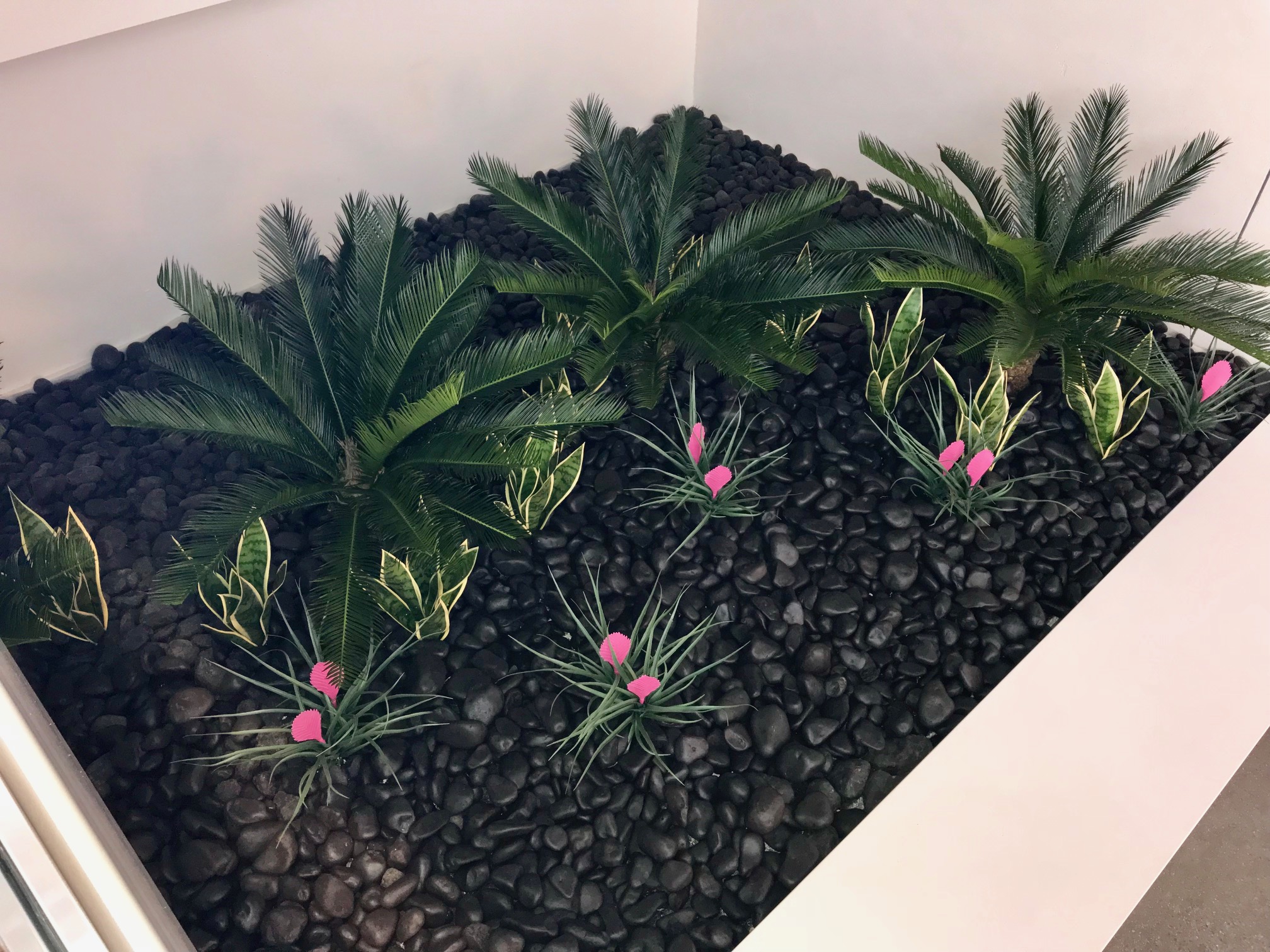We can thank the Sixties for a lot of things: some of the world’s best music, the American space program, and the rise of political activism. But we also have to hold the 1960s responsible for the open office floor plan the majority of working Americans are subjected to in 2018.
Like a lot of things, strong economic growth after World War II caused office designers to offer companies a low cost way to increase the efficiency of their floor plans so they could add people without renting space or buying buildings. In 1968, American office furniture company designer Robert Probst came up with the cubicle, which provided workers privacy while allowing them a view of the open office if they stood up. They were modern, flexible, and efficient.
As mobile technology was developed, companies started experimenting. Out went the cubicles, and in came – the open office plan, where all workers were encouraged to collaborate and move around in the interests of efficiency. We started hearing words like “hoteling,” “hot desking,” and “alternative officing.” There were co-working spaces for consultants and contractors.
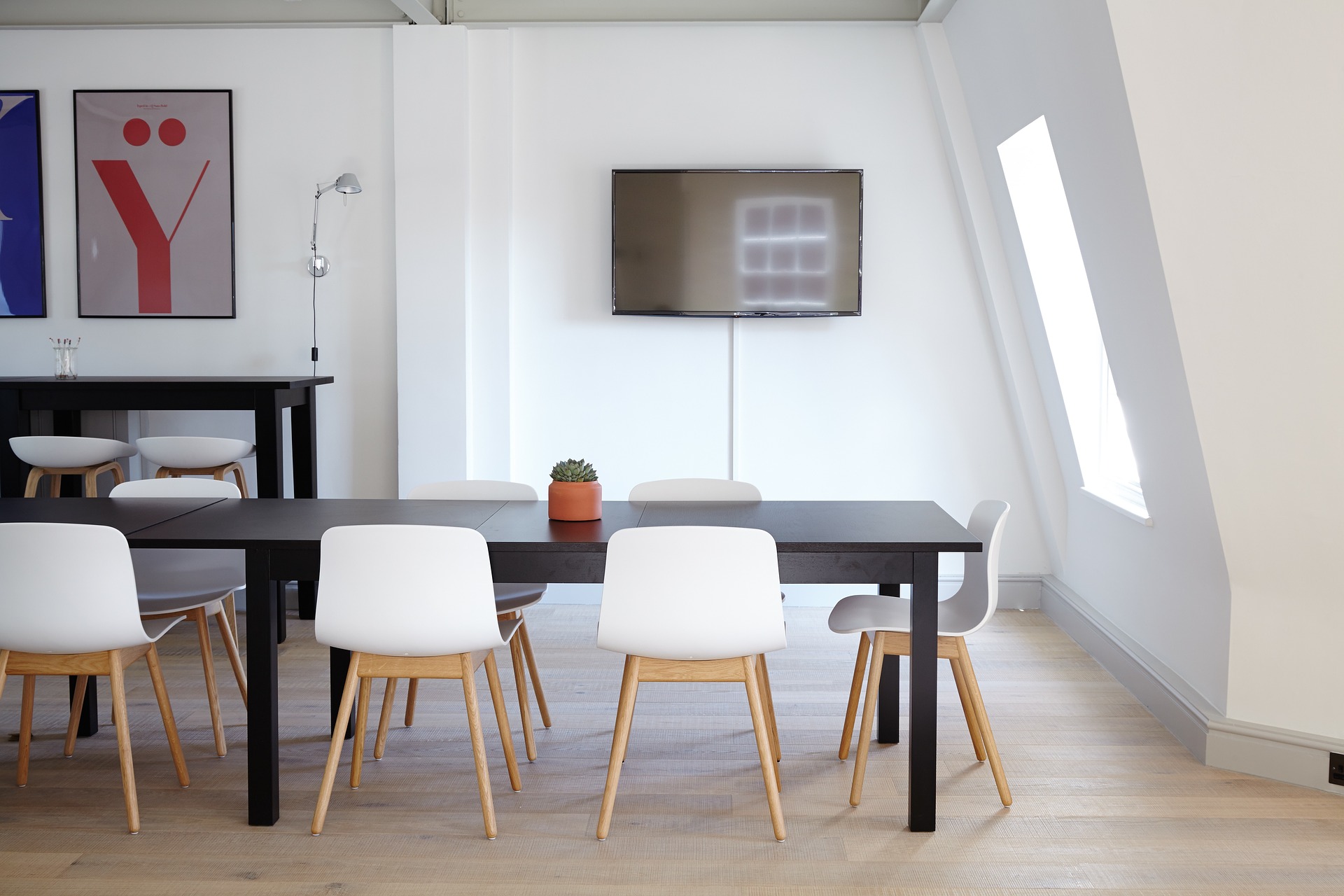
The open office floor plan is here to stay. Adding plants can solve a lot of the problems they cause. Photo: StockSnap
But no matter how much people tried to convince us that open-office plans were good for workers, we all knew about the reality of constant noise, visual distractions, and interruptions. Our concentration and creativity suffered, and our job performance did too.
Now a new study shows us just how bad open offices really are – and it’s even worse than we thought.
Open office plans decrease F2F interaction among employees
Harvard University researchers Ethan Bernstein and Stephan Turban looked at employee interactions at two Fortune 500 companies before and after their traditional office spaces were converted to open office floor plans. Employees wore electronic monitors and trackers so we know the data is accurate. The researchers gathered 96,778 face-to-face interactions, 84,026 emails, and 25,691 instant messages by 52 employees.
They discovered:
- Use of email increased between 22 and 56 percent
- Face-to-face interaction dropped 72 percent – down to less than two hours a day.
- Productivity slowed down
- Job satisfaction dropped
The scientists did a second version of their study at another company. They tracked 100 employees this time. And – the results were almost exactly the same.
Umm, weren’t open office floor plans supposed to INCREASE communication and collaboration?
The fix for the open office: add plants!
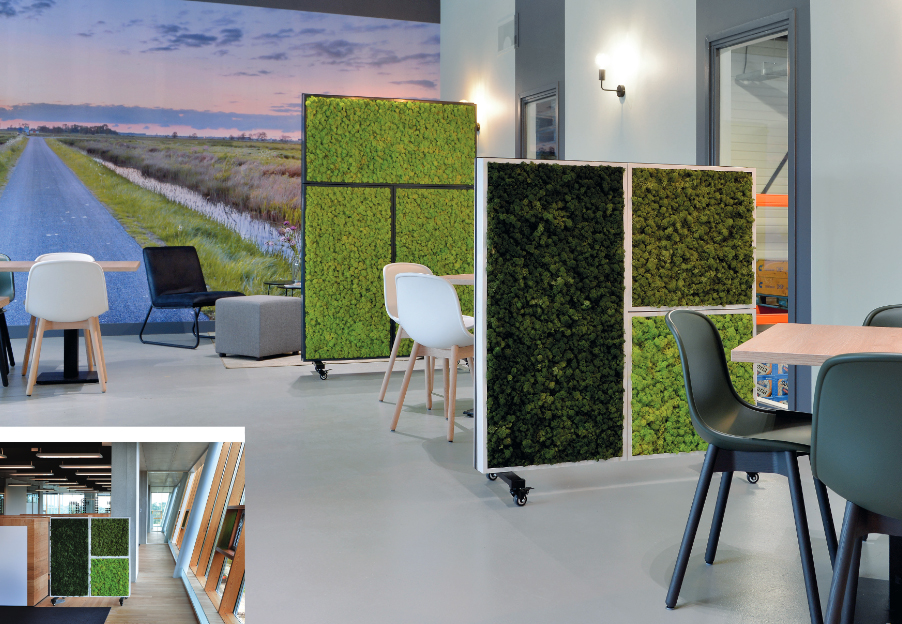
A cool new way to integrate plants and privacy into open office plans: modular moss walls. Perfect in nearly any type of conditions.
Breaking down office walls is a bust. Workers don’t like open floor plans. They dislike the noise, the loss of privacy, and the feeling someone is always watching and judging them. There are studies that suggest women suffer more job discrimination when they are forced to be “on display” in open offices.
Science proves this isn’t whining and it’s not subjective. Productivity takes a hit, and creativity suffers. One creative idea can change the world! Who wants to shut down creativity when we need it most?
Even with these results and the results from many other studies that all tell us the same thing, the open office isn’t going away soon. How can we help employees be more comfortable in their working environment, lower anxiety and improve performance?
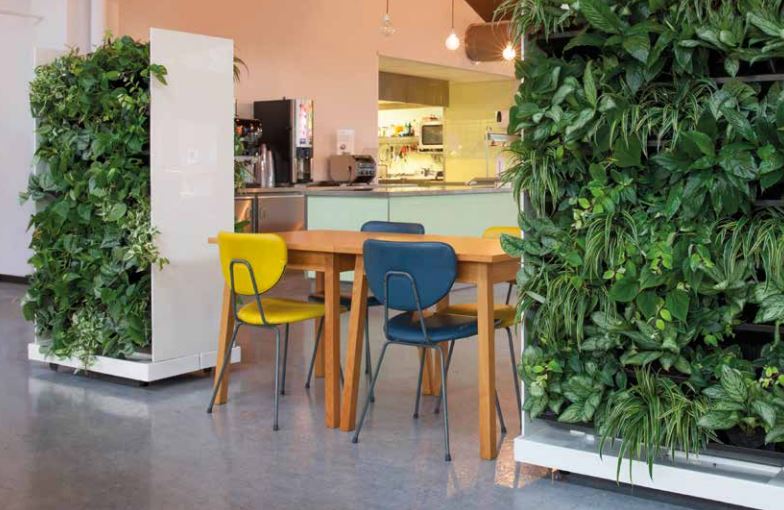
Movable living wall dividers can transform an open office floorplan into a more inviting, productive workspace.
News reports claim there aren’t any answers. We disagree – they forgot to ask us. Your humble Eco-Warrior knows what to do. It’s as simple as – plants!
An open office is a nightmare of noise and distractions. Not only do office plants block all the visual noise, they also quiet down the noise of the working environment. Living walls make excellent sound barriers. They also process carbon dioxide and return cleaner oxygenated air into an open office. People are able to breathe better. Studies do in fact show absenteeism goes down an average of three and a half days per person a year when plants are present. Multiply this by the number of employees and that could be months of additional work for minimal investment.
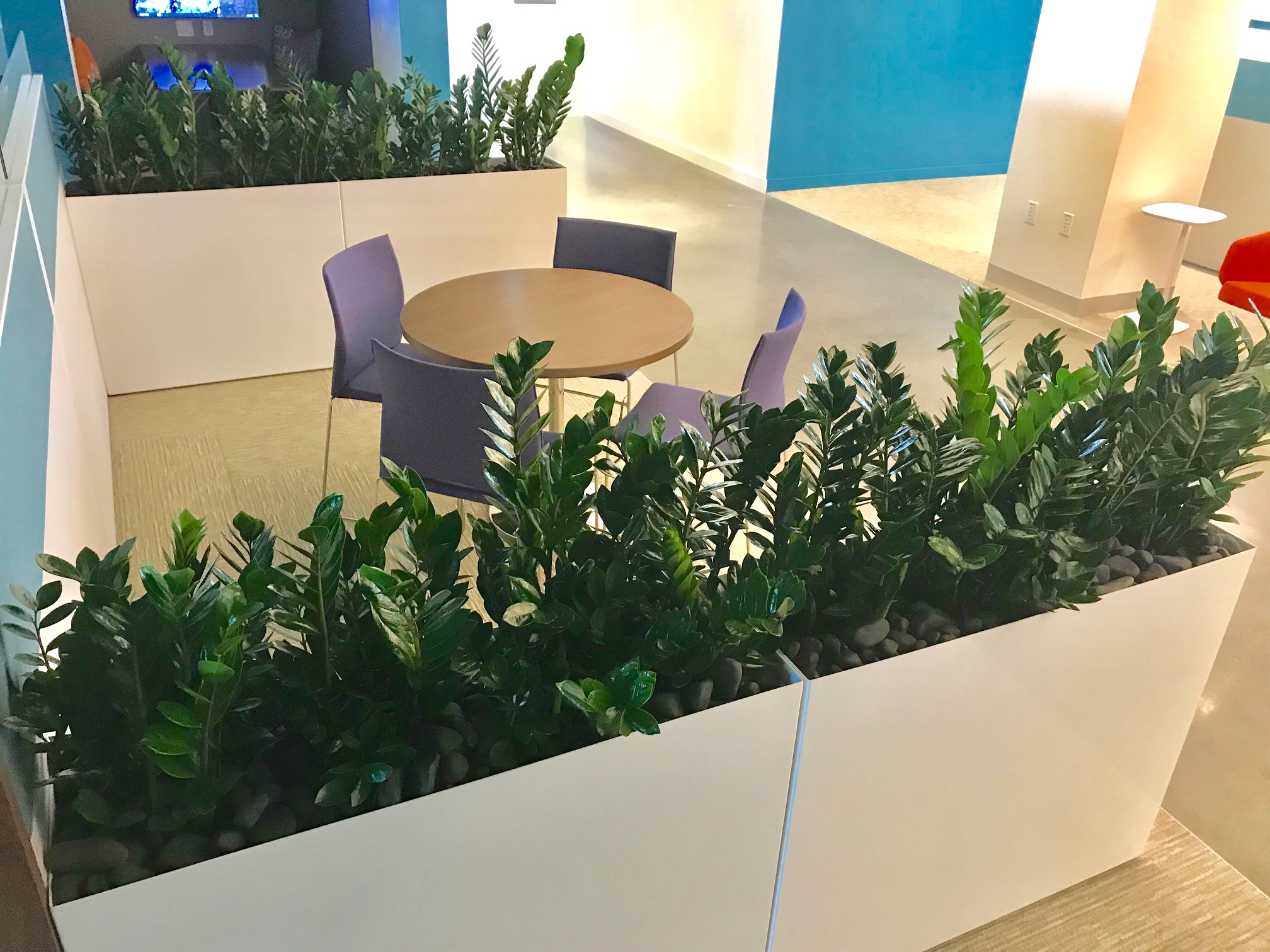
Dividers like this one created by Good Earth Plant Company for Vertex Pharmaceutical can be installed at any height to eliminate distractions and provid privacy.
“Collaborative” spaces continue to be hot in office design. There are many ways to integrate plants into this type of space with mobile living walls and moss walls as room dividers. They can be moved into place to provide privacy too when workers need to grind out a project on deadline without distractions. Plants in creative room dividers like the ones we recently created for Illumina and Vertex in San Diego can be raised can be made at nearly any height.
A series of artistic containers can become a substitute for the missing walls. We love having fun with these. We recently used containers for some of our biotechnology clients that look like huge pieces of origami. Cool!
Plants improve employee performance and satisfaction
We already know the many positive effects of plants in the workplace. They increase overall well-being, reduce stress, increase productivity and overall satisfaction. The more we learn about the biophilic connection human beings have with nature, the more we also realize how damaging it is to shut people off from the outside environment in sterile offices all day. It’s simply unnatural and unhealthy.
Like it or not the open office is here to stay. The cost advantages are too great to put the walls back up. Employees do admit they feel a greater sense of camaraderie and a more collaborative management structure in an open office environment. But the distractions need to be minimized. Otherwise, employees find ways to shut themselves off from their co-workers for sheer survival. They hide behind headphones and Slack channels. Who can blame them?
If businesses don’t provide employees the proper environment to maximize their productivity, they can’t do their jobs. You can’t blame them for not being able to perform at their best for you. It is a whole lot less expensive to improve your workplace environment by incorporating nature through plants than to issue headphones, buy massive computer monitors or put the walls back up.
If you don’t believe me, your friendly Eco-Warrior, you have to start believing science one of these days. And when you do, give Good Earth Plant Company a call or email me at jim@goodearthplants.com

